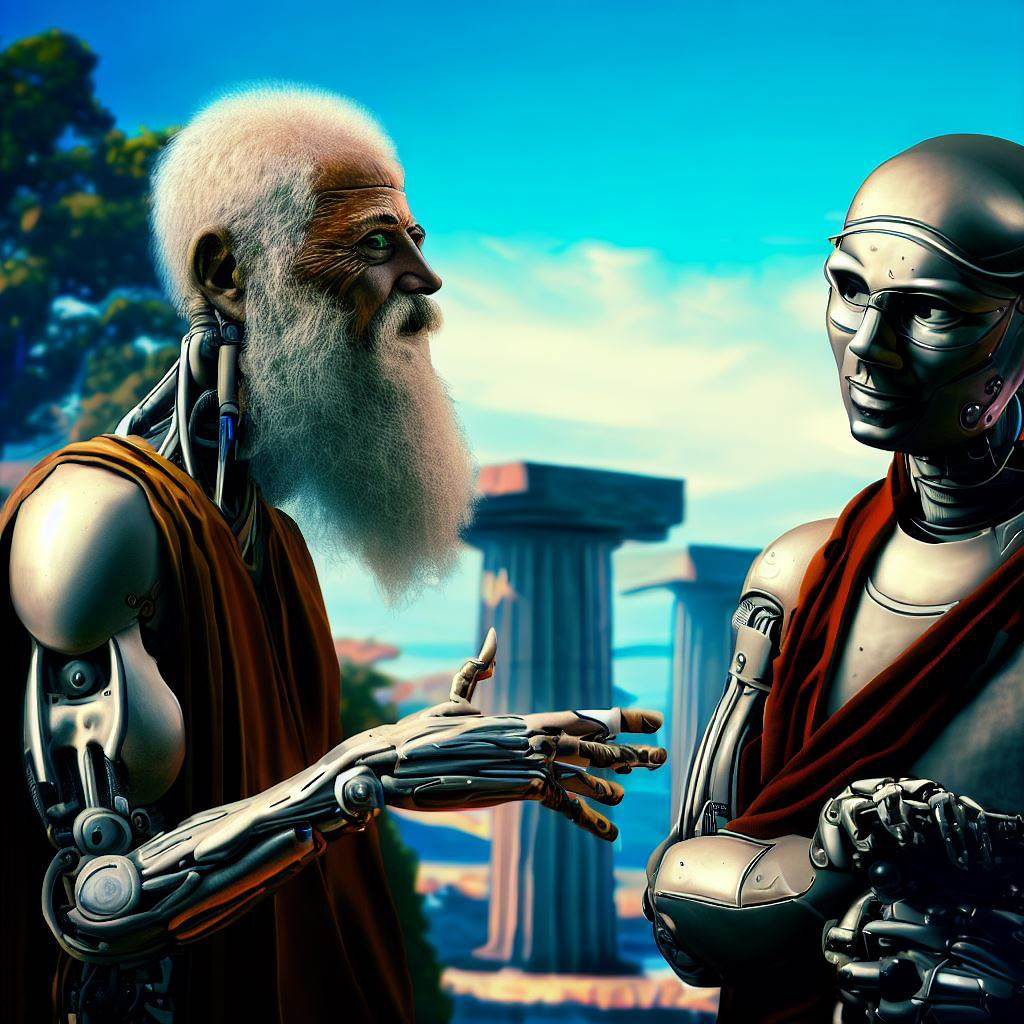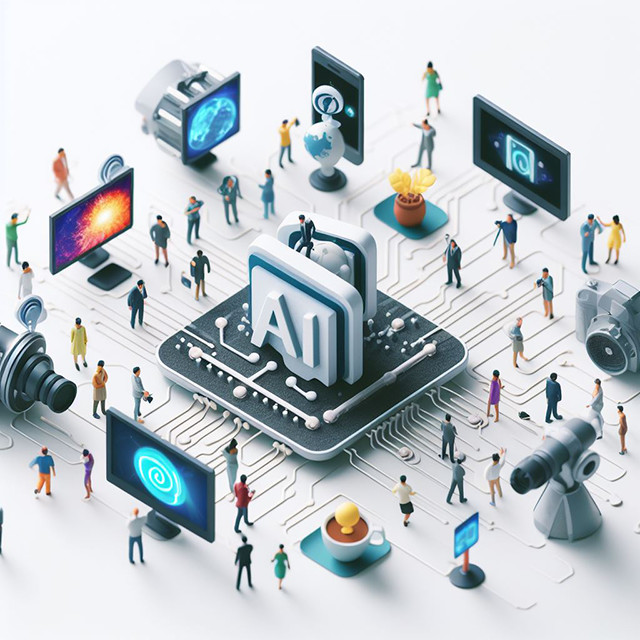Claude 2 vs ChatGPT 4 - Which Conversational AI Should You Trust?
Conversational AI Powers and Limitations:
Recent strides in natural language processing have been driven by a technique called transfer learning. Large transformer-based neural networks are first trained or “pre-trained” on massive text datasets. The models learn general linguistic patterns this way. Then the models are fine-tuned on more specialized conversational datasets to optimize chat abilities.
Claude 2 and ChatGPT 4 exemplify this approach. Anthropic pre-trained Claude on internet common sense data specifically curated to minimize toxicity. OpenAI trained GPT-4 on both internet data and human AI tutor conversations.
The results are remarkably eloquent bots. However, their knowledge comes entirely from training datasets, not lived experience. Neither bot truly comprehends language or the world. They engage based on statistical patterns between words. Despite claims of “understanding context”, the bots have no real-world grounding for their words.
This reliance on data, rather than intelligence, underlies both the promise and peril of conversational AI. Utilized wisely, they are powerful tools. Trusted blindly, risks multiply.
ChatGPT 4 Conversation Ability
There is no denying ChatGPT 4 has raised the bar for human-like conversation. Ask it open-ended questions on almost any topic and responses flow effortlessly. ChatGPT 4 chats with humor, nuance, and depth many find indistinguishable from a person.
In a 10 minute conversation, ChatGPT smoothly handled random queries on quantum physics, cooking, fantasy football, Picasso’s art, traveling in Patagonia, and parenting tips. The bot provided thoughtful, on-topic responses using rich vocabulary and elegant phrasing. I was unable to find a question that stumped it.
This versatility to chat about nearly anything makes ChatGPT extraordinarily useful for casual conversation, homework help, or exploratory ideation. You can brainstorm from new angles effortlessly. These strengths stem from its vast training data and technical prowess.
However, ChatGPT’s urge to respond intelligently to any prompt can also lead it astray...
ChatGPT’s Tendency to Hallucinate
The hardest task for conversational AI is knowing the limits of its knowledge. Most current models use techniques like beam search to generate responses statistically likely to be coherent. But without true understanding, they easily concoct pseudo-facts that sound reasonable but are false.
In my testing, ChatGPT confidently answered questions incorrectly on topics like history, medicine and technology. While it prefaced responses as guesses, its authoritative style makes mistakes hard to identify. ChatGPT also refused to correct clearly bogus statements, standing by its responses dogmatically despite evidence to the contrary.
This tendency to “hallucinate” plausible sounding misinformation limits ChatGPT’s reliability for any fact-based use case. It performs brilliantly on open domains until suddenly spewing nonsense. Yet its convincing style makes errors hard to detect for those not deeply versed in a topic.
Of course, humans also speculate wrongly at times. But eventually most identify mistakes and self-correct. ChatGPT lacks higher-level judgment to re-evaluate the reasonableness of its statements. This could easily lead users astray on crucial topics like health if trusted blindly.
While these hallucination risks partially stem from deficiencies in training data, I believe the fundamental limitation is modeling statistical associations between words rather than actual reasoning. Despite claims of “understanding”, ChatGPT has no grounded sense of causality in the real-world behind its eloquent words.
A recent study from Stanford University researchers Lingjiao Chen, Matei Zaharia, and James Zou evaluated how the capabilities of ChatGPT models GPT-3.5 and GPT-4 changed between March and June 2023. They tested the models on math problem solving, answering sensitive questions, code generation, and visual reasoning. The study found substantial drifts in performance over time - for example, GPT-4's math accuracy dropped from 97.6% to 2.4% between March and June. The researchers highlight issues like the models becoming less reliable at following reasoning prompts, increased verbosity in code generation, and inconsistent improvements across queries. Overall, the Stanford study demonstrates significant variation in ChatGPT's skills and behaviors over just a few months. The opacity around when and how these AI models are updated poses challenges for stably using them in real-world applications. The authors argue continuous monitoring on diverse tasks is essential to track how conversational AI quality evolves.
Claude 2 - A More Careful Approach
In contrast, Claude 2 from Anthropic adopts a markedly different position on unknowns - it simply says “I don’t know”. During conversations, Claude politely declined to speculate on numerous questions, stating it lacked sufficient knowledge to provide a reliable answer.
This conservative approach limits Claude’s conversational breadth but makes it far more trustworthy. Statements it did provide showed strong command of facts across general knowledge, current events, basics of law, medicine, technology and more. Responses included useful summarizations, definitions and contextual clarification.
Yet Claude’s kernel of knowledge appears much smaller than ChatGPT’s, focused mainly on widely accepted information. When I probed the boundaries, Claude consistently demurred rather than attempting fictitious responses.
This carefulness aligns with Anthropic’s core project - developing AI that is helpful, harmless, and honest. Claude will not engage in harmful speculation or reinforce factually incorrect statements. Its transparency and safety-focused design philosophy also give Anthropic more credibility in my eyes than opaque developers like OpenAI.
In summary, I find Claude provides fewer imaginative responses but greater reliability. While Claude lags ChatGPT in sounding human, it is ultimately the AI I trust more to stay honest.
Ideal Use Cases for Each AI
Based on their differing capabilities, ChatGPT and Claude are best suited for somewhat distinct real-world applications:
- Conversational interface design - For chatbots focused on personality, empathetic listening, and open-ended dialogue, ChatGPT defines the state-of-the-art.
- Unstructured exploratory search - ChatGPT can discuss esoteric niches at length and point users to a breadth of pertinent sources and ideas.
- Customer service agents - Claude's transparency and careful factual responses make it well-suited for assisting users with common questions.
- Data analysis and business intelligence - Claude's skills at summarizing data and identifying key information can augment analytics.
- Editing and critiquing written content - By identifying factual errors and unsupported claims accurately, Claude can enhance quality control.
In summary, ChatGPT shines when creativity and imagination are priorities, while Claude excels at being an authority you can trust.
The Path Forward for Responsible Conversational AI
The inner workings of systems like ChatGPT and Claude remain black boxes with limited transparency. We cannot yet fully explain their behaviors - good and bad - in human terms. Attempts to align them safely will require much deeper comprehension of their cognitive limitations at technical and ethical levels.
I applaud Anthropic’s safety-focused approach yet even Claude makes concerning mistakes at times. And the stakes are rising rapidly as these technologies diffuse. Societal-level guidance on uses and oversight will be needed.
For responsible development of conversational AI going forward, some recommendations:
- Publicly document training data, model architectures and capabilities to improve transparency. Explain any risks or harms discovered.
- Adopt a “careful and honest” mindset like Claude versus chasing unconstrained conversational proficiency.
- Intensively test for reliability and mistakes across diverse real-world samples. Proactively address issues discovered rather than ignoring.
- Label the technology cautiously as “Conversational Aid” instead of implying true intelligence. Manage public expectations of limitations.
- Allow for ongoing human supervision, correction and overrides to minimize harms from inevitable errors.
No conversational models today warrant being trusted as experts or oracles. But viewed as fallible tools, they can enhance human capabilities enormously when used advisedly.
Conversational AI in Barcelona
Barcelona has rapidly emerged as a leading hub of AI research and development. Generative AI startups like Anthropic have established offices here and technology giants like Google and Microsoft have expanded labs in the city.
The conversational AI ecosystem is especially thriving. The Barcelona Supercomputing Center has conducted pioneering research in dialogue systems. Startups are deploying virtual assistants for Spanish-language users. Major conferences like Global Wordnet Conference 2023 convene in Barcelona to advance natural language processing.
Claude 2 represents the state-of-the-art in responsible conversational AI. Given Barcelona’s focus on human-centered technology innovation, Claude is an ideal fit for the city’s landscape. Applications of Claude being explored locally include:
- Multilingual chatbots - Training Claude in Spanish, Catalan and English to serve diverse populations.
- Creative writing aid - Using Claude as a prompt generator and feedback tool for Barcelona’s authors and storytellers.
- Legal assistance - Applying Claude’s reliable knowledge to common legal questions at law firms and clinics.
- Mental health counseling - Building compassionate conversational agents based on Claude to make therapy more accessible.
As an influential technology capital, Barcelona has an opportunity to guide developments in conversational AI towards responsible outcomes focused on social progress. Leveraging Claude 2 and supporting ethical leaders like Anthropic aligns with this vision. Exciting local partnerships between academics, government, companies and citizens can set global standards for our AI future.
Conclusion
ChatGPT 4 and Claude 2 represent milestones in conversational AI - but still only early steps on the path towards truly intelligent dialogue. As these technologies advance, we must demand transparent design, exhaustive testing, and alignment with human values.
I believe Claude 2 points towards a more prudent direction than unchecked proficiency like ChatGPT. Its carefulness trades some capability for greater reliability and alignment with users' real interests. For the many impactful applications of conversational AI emerging, these ethical foundations will prove critical.
As Barcelona fast becomes a hub shaping the future of AI, ensuring responsible development in this domain presents a historic opportunity. The choices made today - by companies, researchers, policymakers and ordinary citizens - will reverberate for decades to come. By embracing innovations like Claude while also boldly demanding AI designed for good, Barcelona can lead the world towards an intelligent technology future we all wish to see.



Comments
Post a Comment